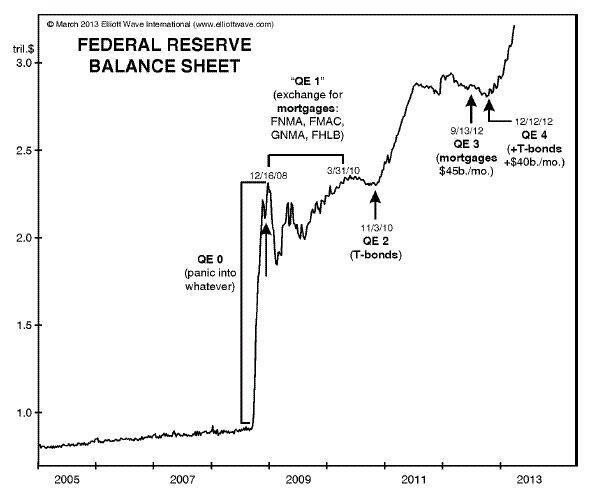Fed Lowers Discount Rate to Calm Markets NPR
Post on: 16 Март, 2015 No Comment

Listen
Fed Policy Statements
Aug. 17, 2007: Financial market conditions have deteriorated, and tighter credit conditions and increased uncertainty have the potential to restrain economic growth going forward. In these circumstances, although recent data suggest that the economy has continued to expand at a moderate pace, the Federal Open Market Committee judges that the downside risks to growth have increased appreciably. The Committee is monitoring the situation and is prepared to act as needed to mitigate the adverse effects on the economy arising from the disruptions in financial markets.
Aug. 17, 2007: To promote the restoration of orderly conditions in financial markets, the Federal Reserve Board approved temporary changes to its primary credit discount window facility. The Board approved a 50 basis point reduction in the primary credit rate to 5-3/4 percent, to narrow the spread between the primary credit rate and the Federal Open Market Committee’s target federal funds rate to 50 basis points. The Board is also announcing a change to the Reserve Banks’ usual practices to allow the provision of term financing for as long as 30 days, renewable by the borrower. These changes will remain in place until the Federal Reserve determines that market liquidity has improved materially. These changes are designed to provide depositories with greater assurance about the cost and availability of funding. The Federal Reserve will continue to accept a broad range of collateral for discount window loans, including home mortgages and related assets. Existing collateral margins will be maintained. In taking this action, the Board approved the requests submitted by the Boards of Directors of the Federal Reserve Banks of New York and San Francisco.
Aug. 10, 2007: The Federal Reserve is providing liquidity to facilitate the orderly functioning of financial markets.
The Federal Reserve will provide reserves as necessary through open market operations to promote trading in the federal funds market at rates close to the Federal Open Market Committee’s target rate of 5-1/4 percent. In current circumstances, depository institutions may experience unusual funding needs because of dislocations in money and credit markets. As always, the discount window is available as a source of funding.
The Federal Reserve said Friday it has approved a half-percentage point cut in the discount rate — a dramatic move aimed at calming markets roiled by a widening credit crisis.
In a statement explaining the board’s action, Federal Reserve Chairman Ben Bernanke and his colleagues said that while incoming data suggest the economy is continuing to expand at a moderate pace, the downside risks to growth have increased appreciably.
The Fed acknowledged that conditions had deteriorated and tighter credit conditions and increased uncertainty have the potential to restrain economic growth going forward. The central bank said it was monitoring the situation and is prepared to act as needed to mitigate the adverse effects on the economy arising from the disruptions in financial markets.
The Fed’s decision means that the discount rate, the interest rate that the Fed charges to make direct loans to banks will be lowered to 5.75 percent from 6.25 percent.
The Fed did not change its target for the more important federal funds rate, which has remained at 5.25 percent for more than a year. It has been infusing billions of dollars into the banking system in recent days to keep that rate from rising above the target level.
Markets worldwide have been pummeled by a rapidly spreading credit crisis that began with rising defaults in U.S. subprime mortgages – home loans made to people with weak credit histories. Now the problems are spreading to other borrowers.
Many economists believe if the financial market crisis worsens, the Fed will soon move to cut the federal funds rate as well.
White House deputy Press Secretary Tony Fratto declined to comment on the announcement but said, We have full confidence in the Federal Reserve on these issues and respect their independence.

The policy announcement was approved unanimously by the Federal Open Market Committee, the group of Fed board members in Washington and Fed regional bank presidents who set the federal funds rate.
Many economists have been calling for the Fed to move to cut the target for the federal funds rate, which has been at 5.25 percent since June 2006.
The discount rate covers only loans that the Fed makes directly to banks. But the funds rate covers all loans that banks make to each other on a short-term basis. It is much more critical in determining interest rates in the economy such as banks’ prime lending rate.
Many economists believe that the crash of the nation’s once high-flying housing market and tightening credit, as well as declining consumer confidence, could trigger a recession.
Since setting a record close of 14,000.41 just a month ago, the Dow Jones industrial average has shed 1,154.63 points in a string of triple-digit losing days that have raised anxiety levels not just on Wall Street but on Main Street as well.
Countrywide Financial Corp. the nation’s largest mortgage banker, was forced to borrow $11.5 billion on Thursday so it could keep making home loans. It was a move that rattled investors who have watched a number of smaller mortgage companies go under because of credit problems.
From NPR reports and The Associated Press














